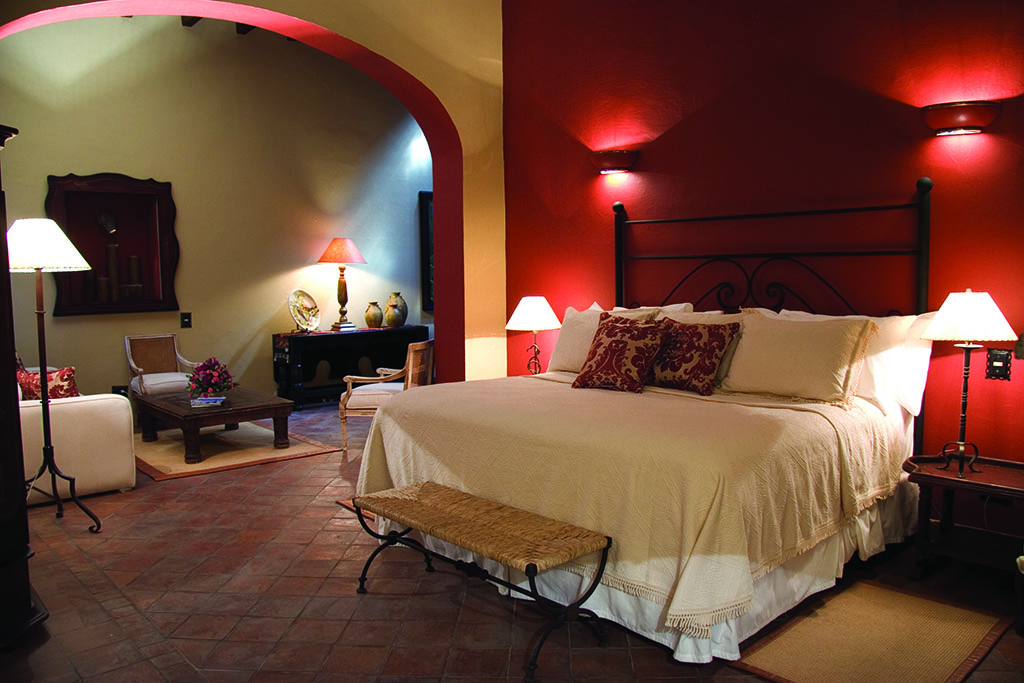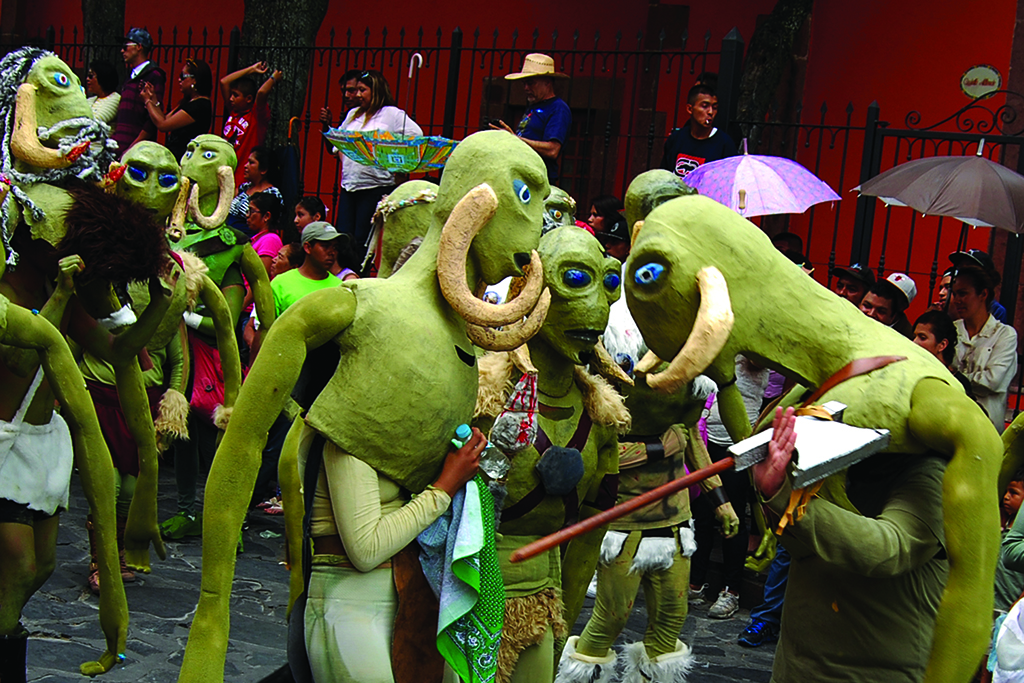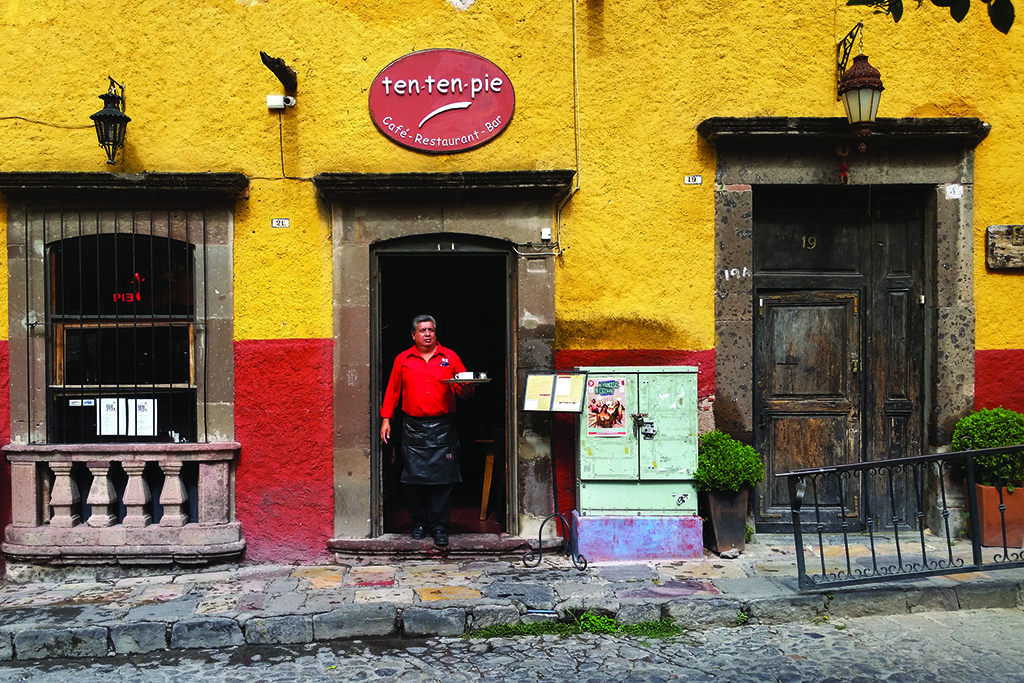Arriving late at night in San Miguel de Allende can be an eerily daunting experience. Having been here before, I recognized that look on Renee’s face, and though she didn’t say a word, I could see it in her eyes.
After a long flight from Fort Lauderdale to Del Biagío International Airport with a stop in Dallas, followed by a 90-minute drive from the airport over seemingly endless, winding roads cloaked in darkness, all we could see in front of us when the car stopped was a large doorway with a small sign bearing the name of our hotel: Belmond Casa de Sierra Nevada.
I had to smile, as I knew that once the porter opened the door, we would embark upon the first of many adventures into the magical world of San Miguel de Allende. A world that lies hidden behind a panoply of doorways: painted doorways, ornately carved doorways, whimsical doorways, and massive wooden doorways.
In fact, the doorways of San Miguel de Allende are world renowned with some dating as far back as the 16th century. There are numerous books written about them, featuring the myriad artists who commemorate their uniqueness.

Adanza Restaurant
As we entered the hotel, we found ourselves in a lushly landscaped courtyard with stone archways, stucco walls, a fireplace, and massive trees reaching upward to the open sky. It was opulent, yet relaxed and comfortable. We were immediately welcomed by two hotel staff members who greeted us by name.
I smiled once again, as my friend turned to me with an expression that belied that wow moment.
The Belmond Casa de Sierra Nevada (Hospicio 35, Centro, Tel: +52-415-152-7040. www.belmond.com) is actually a cluster of several 16th- to 18th- century Spanish colonial buildings within a few blocks of each other, each one a short walk to the town square. Our casona was a 16th-century building that had served as the bishop’s residence in its first incarnation.
In the center of the courtyard is the famed Adanza, a AAA Four Diamond restaurant, and over the next few days, we happily learned how it achieved its reputation as one of the finest restaurants in San Miguel de Allende. Although it was closing for the night, the concierge arranged to have some wine and snacks delivered to our room.
Designated as historic homes by the National Institute of Anthropology and History, each of the hotel’s 33 rooms meticulously meld restored period furniture alongside modern, more luxurious amenities, including Wi-Fi and flat-screen TVs. When we returned to our room at the end of each day, there were rose petals placed across the bed and washcloths crafted into swans to greet us.
Serving breakfast, lunch, and dinner, the chefs at Adanza not only go to the local market each day to hand pick the freshest ingredients, but they also conduct a culinary class at the hotel’s Sazón culinary school. Although Renee and I didn’t take the class (so much to do, so little time), Ruben, the sous chef, and Sharon, his assistant, took us to the local produce market and showed us how they choose the freshest produce and spices for the daily offerings at the restaurant.
Located 170 miles northeast of Mexico City, San Miguel de Allende is quaint, yet cosmopolitan. In 2008, UNESCO named it a World Heritage of Humanity Site, honoring its preservation of centuries-old civil and religious architecture. It is also a true walking city, with winding cobblestone streets and 16th-century buildings that house chic boutiques, art galleries, fashion houses, wine bars, and jazz clubs.

A Suite at Belmond
Although I was aware that San Miguel de Allende had become an increasingly popular destination for international artists, entrepreneurs, and baby boomers, I didn’t realize that so many American expats had made their home here year-round. Everywhere we went, we met Americans who had fallen in love with the city and relocated there.
The city’s vibe is like a scaled-down version of San Francisco, especially San Francisco pre-Starbucks. Cultural diversity is both respected and celebrated in San Miguel de Allende.
While I saw some slight changes since I had been here eight years ago, the city has not lost any of its charm. I was a bit taken aback to learn that a Starbucks had opened in the heart of the town square, but unless you know where to look, you would- n’t even notice it, as it blends right in with the surrounding buildings. Hidden behind a doorway.
With only three full days to spend here, we wanted to experience as much of the local life as possible, and since June was “off-season,” we didn’t expect that there would be much going on. We were wrong.
Throughout all of Mexico, there are celebrations that take place throughout the year. As it turns out, there were two wildly popular, fun-filled events during the weekend we were in San Miguel de Allende: the Fiesta de los Locos (Festival of the Crazies) and the Sabores San Miguel, a huge food festival featuring restaurants, artists, and music.
The Fiesta de los Locos took over the entire city, with more than 15,000 people dressed in costumes, dancing, and running through the streets for hours. Music filled the streets and costumed parade participants threw candy to the children. It was a combination of Mardi Gras in New Orleans and Fantasy Fest in Key West.

Fiesta de los Locos
The Sabores San Miguel, held in Parque Juarez, one of several large green spaces in the city, was a gastronomic love fest. More than 40 restaurants were scattered throughout the park, with local bands playing, people dancing, and artists and jewelers showcasing their wares. It was here that we encountered American expats, extolling the many reasons why life is so much more relaxed and culturally rich in San Miguel de Allende.
Depending on your interests, days can be spent exploring the history of the area, visiting the many ornate churches throughout the city, enjoying horseback riding outside of town, shopping, etc. However, if you have any appreciation whatsoever for art, then a visit to the Fábrica la Aurora (Calzada de la Aurora S/N, Tel: +52-415-152-1312. www.fabricalaaurora.com) is a must.
A 15-minute walk from the center of town, Fábrica la Aurora was built in 1902 and served as a cotton and textile factory until it closed in 1991. Now, among old textile machines and hydraulic turbines that seem to be works of art unto themselves, it has been transformed into working artist studios, contemporary art galleries, antique shops, jewelry design studios, and gourmet restaurants and cafés. Fábrica la Aurora is by far one of the most unique destinations for designers, artists, art collectors, and a novice like me who simply appreciates beautiful works of art, and who wants to shop.
Following a couple of days of walking and exploring, we decided to partake of some of the more relaxing amenities at the Belmond Casa de Sierra Nevada before our next day’s departure.

Local Restaurant
First up, an hour at the swimming pool, although calling it a “swimming pool” is like calling the Louvre an art gallery. The pool area is truly an oasis, nestled in the courtyard of Casa Palma, in one of Belmond Casa de Sierra Nevada’s mansion/hotels, just across the street from the main hotel casona. Surrounded by magnificent ancient stone arches and carefully manicured trees and colorful flowers, the staff served up cocktails by the pool, and we couldn’t have asked for a more relaxing ambience.
Afterward, we enjoyed the hotel’s worldclass Laja Spa. Unpretentious and tranquil, the spa’s aromas pay homage to the local flowers and plants. Offerings include a Cocoa and Chili Body Wrap, Rose Blossom Facial, Brown Sugar, and Natural Honey Exfoliation, and a wide array of massage options. Having walked for days, I chose a more traditional deep-tissue aromatherapy massage, using lavender and rosemary, and it was heavenly. Gaby’s hands should be cloned!
Getting ready for the trek home, I recall that it is said that “One does not visit San Miguel de Allende just once.” It is not a large city—approximately 60,000 people live in the main part of town—and it takes about 20 minutes to walk from one end to the other. What makes it so unique is that while it has a feeling of old Europe, filled with a historic heritage and immaculately preserved architecture, it seamlessly coexists with the 21st-century art galleries and upscale boutiques, albeit hidden behind doorways, beyond the cobblestone roads, just waiting to be discovered.


